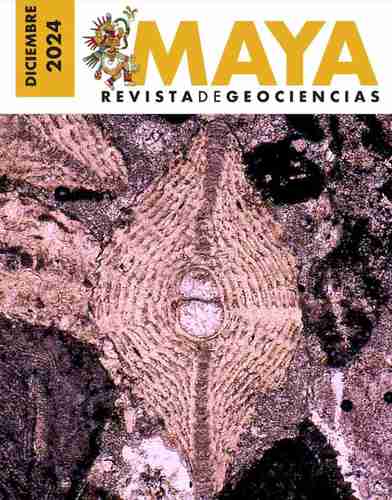Three years after its creation, the Mayan Journal of Geosciences –a channel for the dissemination and dissemination of Earth sciences– has established itself as a bridge for academics from the United States, Mexico and Latin America to form a community in which to share experiences, ideas and hypotheses about this discipline.
This is how Bernardo Ignacio García Amador, professor at the Faculty of Engineering of the National Autonomous University of Mexico (UNAM) and one of the editors of this self-managed, non-profit publication, assessed it.
At first we considered it a forum where colleagues who wanted to explain a topic in a simple way could find a space. But over time it has become a link through which researchers from various parts of the continent have come into contact and created a community.
he said in an interview with The Day.
The first issue came out in February 2021 – in full confinement due to Covid-19 – and to date works from 11 countries have been published, with authors and co-authors of 16 different nationalities. The diversity of columnists has given the edition a bilingual character (English/Spanish).
Among his most read texts is Return to the Moon: Exploration and resources
in which specialists William A. Ambrose and Bruce Cutright, from the University of Texas, elaborate on the characteristics of the satellite’s geology.
The founding team is made up of Claudio Bartolini, a geologist with 25 years of experience in mining and oil exploration; Luis Ángel Valencia Flores, academic at the National Polytechnic Institute (IPN), with 20 years of work in field planning and drilling projects; and García Amador himself, collaborator of the paleomagnetism laboratory of the Institute of Geophysics of the UNAM. Josh Rosenfeld, a petroleum geologist, later joined.
The pandemic was a niche opportunity; Instead of seeing difficulties, which of course there were, we wanted to propose something. We were very restless, we met on Zoom and asked ourselves: what do we do, what do we do? Until we said: we are going to make a digital magazine, free, free, with zero pretensions
said the geologist.
Since then, 40 editions have been published continuously. At first, the editorial team put together a PDF and shared it by email to their contacts, now they have a website: https://revistamaya.com/.
Among the texts that make up it, the following stand out: geological notes, profiles of pioneers of geoscience, geophysics and geology, biographies of active researchers, and photographs. It also has spaces dedicated to the dissemination of laboratories, research centers, calls for competitions, and summaries of thesis from the UNAM and the IPN.
García Amador estimated that a very relevant section is the Cavern of Art, where colleagues who have an artistic vein can express themselves. The collaborators who paint send us photographs of their paintings; those who write poetry send us their verses; others write stories, and we take them back
.
He highlighted that the first issue of the publication was called Cortes, in reference to an indigenous people from Guatemala, El Salvador and Honduras. However, for the second edition, they decided to change it to the current one. We wanted the name to refer us to what persists over time and that led us to the Mayan culture, in addition to the fact that in geosciences the Yucatan Peninsula is known as the Mayan block.
.
The name alludes to a specific culture, settled in a region of the country, but its pages are not limited to it, but have opened up to various topics: energy transition (hydrogen, lithium, oil), and planetary studies (the surface of the Moon, the atmosphere of Venus).
